We're an affiliate
We hope you love the products we recommend! Just so you know, we may collect a share of sales or other compensation from the links on this page at no additional cost to you. Thank you if you use our links, we really appreciate it!
The Siberian Husky is an exceptional dog breed, known for their elegant thick coat which comes in many different colors and markings.
Aside from their great looks, these loyal canines are famed for their devoutness to work, athleticism, and endurance spirit which makes them a favorite companion for many households.
Siberian Huskies come from Northeastern Siberia where they were used as sled dogs, but they can form close affection with their human family when given proper care.
Whether you’re considering getting this breed or you’re a long-time devotee, read on to discover everything you need to know about the Siberian Husky dog breed.
Brief History of Siberian Huskies
Siberian Huskies were selectively bred over an estimated period of about 3000 years by the indigenous Chukchi people of Northeastern Siberia.
These dogs grew to fill a gap in the life and culture of the inhabitants of Siberia – a place which is described by many as the most unforgiving landscape on earth because of the intense cold.
The winter temperatures of these regions can go below negative 100 degrees Fahrenheit, while the wind speed always fluctuates between 90 – 100 mph.
Siberian Huskies were used as sled dogs to help transport commodities over long distances of snow and in the chilly temperatures.
They had the agility and stamina that were crucial for pulling heavy sleds loaded with supplies across vast distances, sometimes covering over 100 miles in a day.
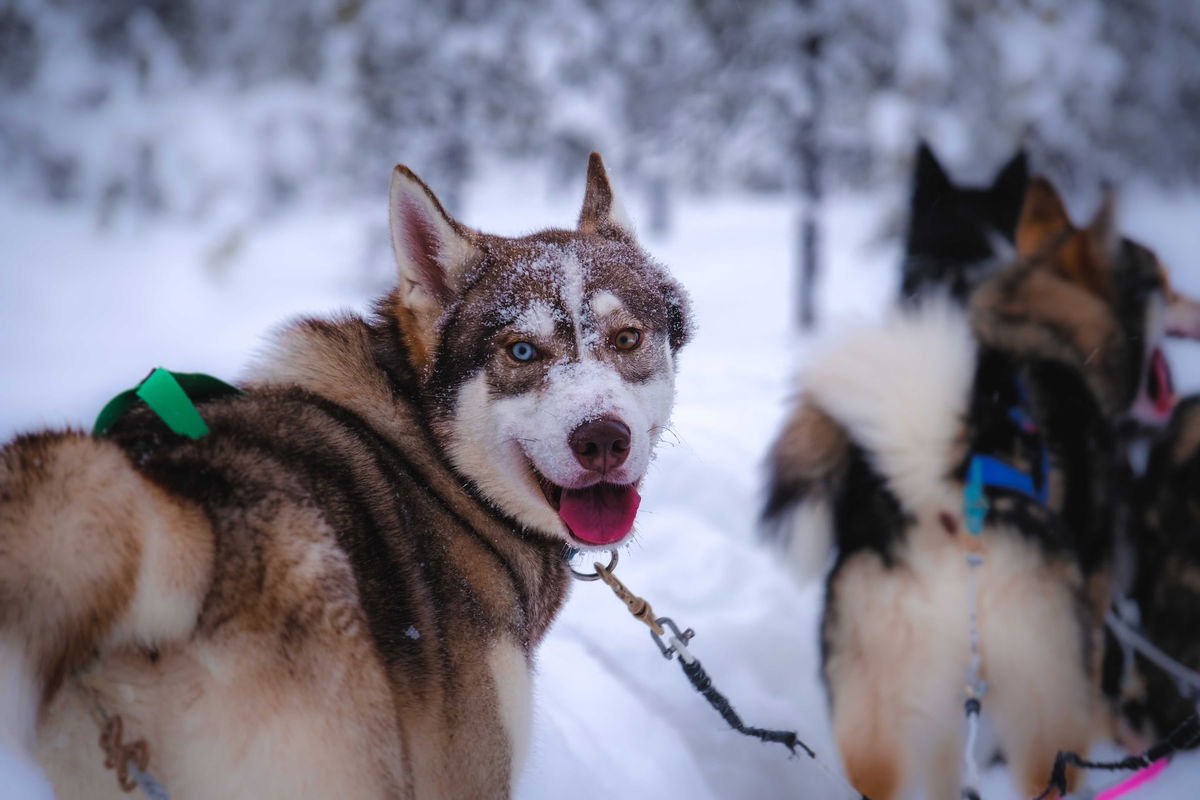
Many historians believe these dogs are descendants of the Spitz family because they developed thick coats to provide warmth in cold conditions.
The Siberian Husky’s journey from Northeastern Asia to Alaska is another fascinating chapter in their history.
During the start of the 20th century, these workaholic dogs were brought to Alaska by Russian fur traders and gold miners.
Siberian Huskies quickly gained recognition across the world for their remarkable speed and pain-staking endurance.
These little Chukchi dogs became an invaluable asset in the world of sled dog racing, where they competed in grueling races like the All-Alaska Sweepstakes.
Perhaps the most famous of these races was the 1925 Serum Run, during which Huskies carried a life-saving antitoxin serum to Nome, earning them lasting fame and admiration.
Siberian Huskies were officially admitted to the American Kennel Club (AKC) in 1930 as purebred dogs.
These elegant workers have continued to serve as sled dogs, although nowadays they are popularly found in households as companion pets.
The popularity of the Siberians has continued to rise over the years, as evidenced by the AKC’s registry which ranks them as the 21st most popular dog breed in the US in 2022.
5 Fascinating Facts About Siberian Huskies
1. Siberian Huskies can endure extreme winter
You probably know about the unforgiving temperatures in Siberia which, according to many, is the coldest landscape on the planet.
Dogs who were selectively bred in this chilly region can naturally handle winter temperatures due to their adaptation.
These dogs have a very thick double coat made up of a dense undercoat to retain body heat and a longer water-resistant top coat to keep moisture away.
Siberian Huskies can work comfortably when subjected to temperatures as low as -75 degrees Fahrenheit.
2. Siberian Huskies are high-energy dogs
Don’t be deceived by the medium-sized stature of Siberian huskies, because beyond the aesthetics, lies an energetic working dog.
Siberians were initially used as sled dogs to carry commodities for the indigenous Chukchi people while covering treacherous terrain in icy conditions.
The energetic nature of Siberian Huskies makes them a superb choice for dog owners who need an active companion.
3. Many Siberian Huskies have blue eyes
Despite being a rare condition, many Siberian Huskies are born with brightly colored blue eyes. These loyal canines can also have a condition known as Heterochromia, where both eyes are differently colored.
4. Siberian Huskies are highly sociable and friendly
Despite their characteristic wolf-like appearance, Siberian Huskies are known for their friendly and outgoing nature.
Not only the Siberians, but all Husky dogs tend to be naturally friendly, so they don’t make good guard dogs since they can easily trust strangers.
People looking for amazing and sociable furry companions in their families can never go wrong with a Siberian.
In addition to forming close ties with their human caregivers, Siberians are also open to forming bonds with other pets.
This intrinsic character makes them a top candidate for people living in colder areas who desire a friendly dog in a multi-pet home.
5. Huskies love to howl
Ask any Siberian Husky parent about the vocal nature of their furry friend and they will probably tell you how their dog is talkative.
Unlike most other dog breeds who prefer barking, Siberians are known for their love to howl, jabber, groan, and grumble.
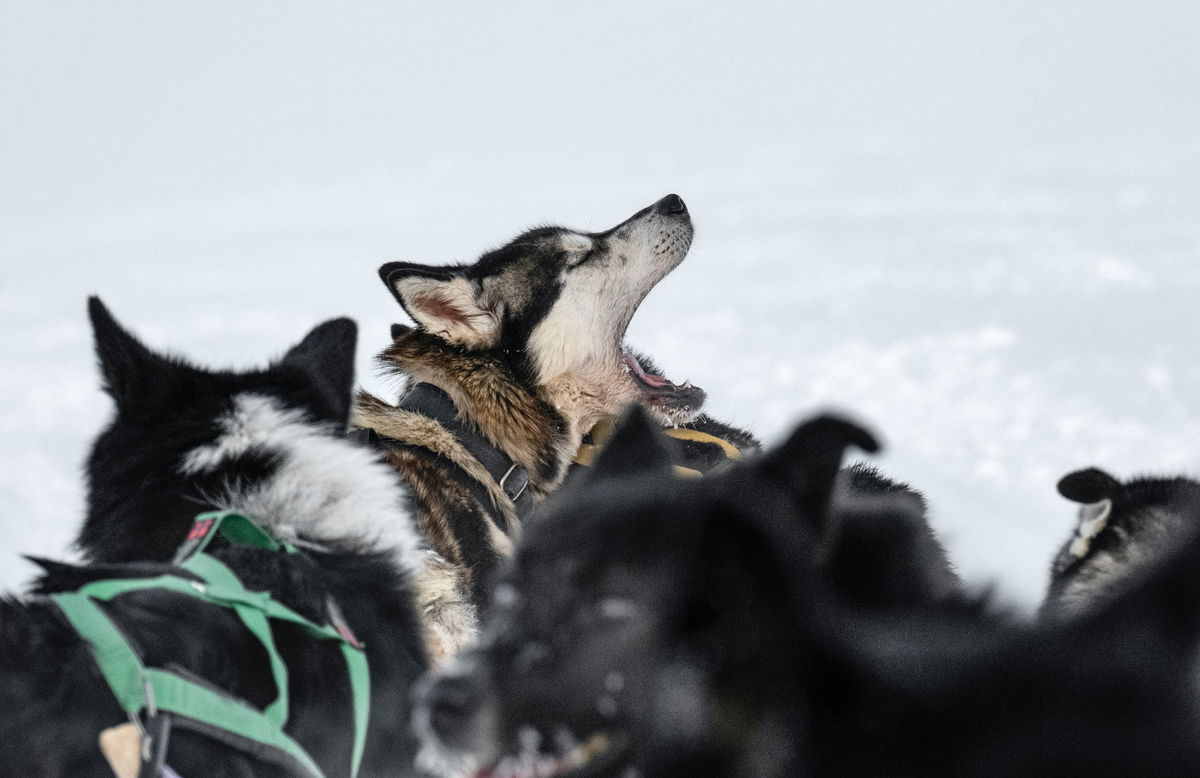
Siberian Huskies can howl as a way of passing a message, similar to how the foxes communicate in the wild.
A Siberian howl could be a call for a bathroom break, or a simple alert to solicit your attention when they need something.
Siberian Husky Puppies
Siberian Huskies are popular dogs and it shouldn’t be a challenge to get a healthy Husky puppy to call your own.
You can bring a Siberian Husky puppy into your home through two popular means, which are adopting and purchasing from a breeder.
We encourage you to do your homework and consider what you need in a pet when deciding the best approach to owning a husky.
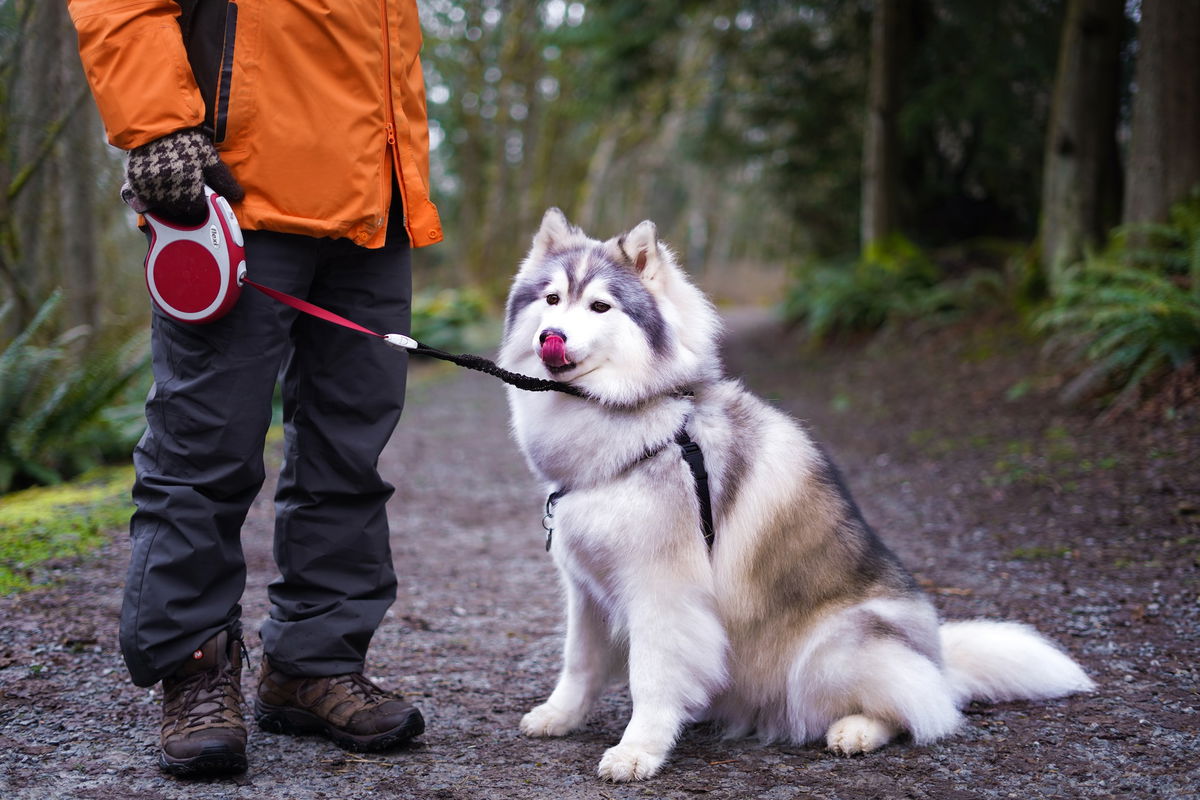
Among the many considerations, you should check your schedule and lifestyle to see if you can keep up with the Siberian high energy levels and needs for activity.
Make sure to puppy-proof your home and invest in the essential dog accessories before bringing your new puppy home.
Siberian Husky Physical Characteristics
Size and Weight range
A fully grown male Siberian Husky can reach an average shoulder height of between 20 – 24 inches, while females are a bit shorter than this range.
A healthy adult male Husky can tip the scale between 45 – 60 pounds, while a female’s healthy weight can average anywhere between 35 – 50 pounds.
Coat color and texture
Siberian Huskies are renowned for their stunning coat colors and unique textures, which play a crucial role in both their aesthetics and functionality.
These workaholic canines can have a wide range of coat colors, which include, black, red, silver, gray, and tan.
Siberian Huskies are covered with double-layered fur which consists of a dense soft undercoat that traps body heat and a longer slightly coarse top coat to keep moisture and ice away.
Distinctive features
One of the top highlights of the Siberian Huskies is their almond-shaped eyes which can come in blue or multicolored.
These dogs also have distinctive erect ears which have a triangular shape that gives them a wolf-like appearance.
You’ll also not fail to notice the marvelous Siberian Husky tail, which is well-furred and arched over the dog’s back in a sickle shape.
Siberian Husky Temperament and Personality
The Siberian Husky temperament can be described as friendly, alert, and outgoing. These dogs are known to form strong bonds with large and small families.
The free-spirited Siberian Huskies have the natural energy and enthusiasm that makes them great playmates for kids and toddlers.
However, make sure you teach your kids how to interact with dogs, to avoid any scuffles from ensuing during playtime.
It helps to always monitor your dog’s interaction with children, especially during the early stages of training.
Siberian Huskies can live harmoniously in a multiple-pet household, as long as they are introduced from an early stage.
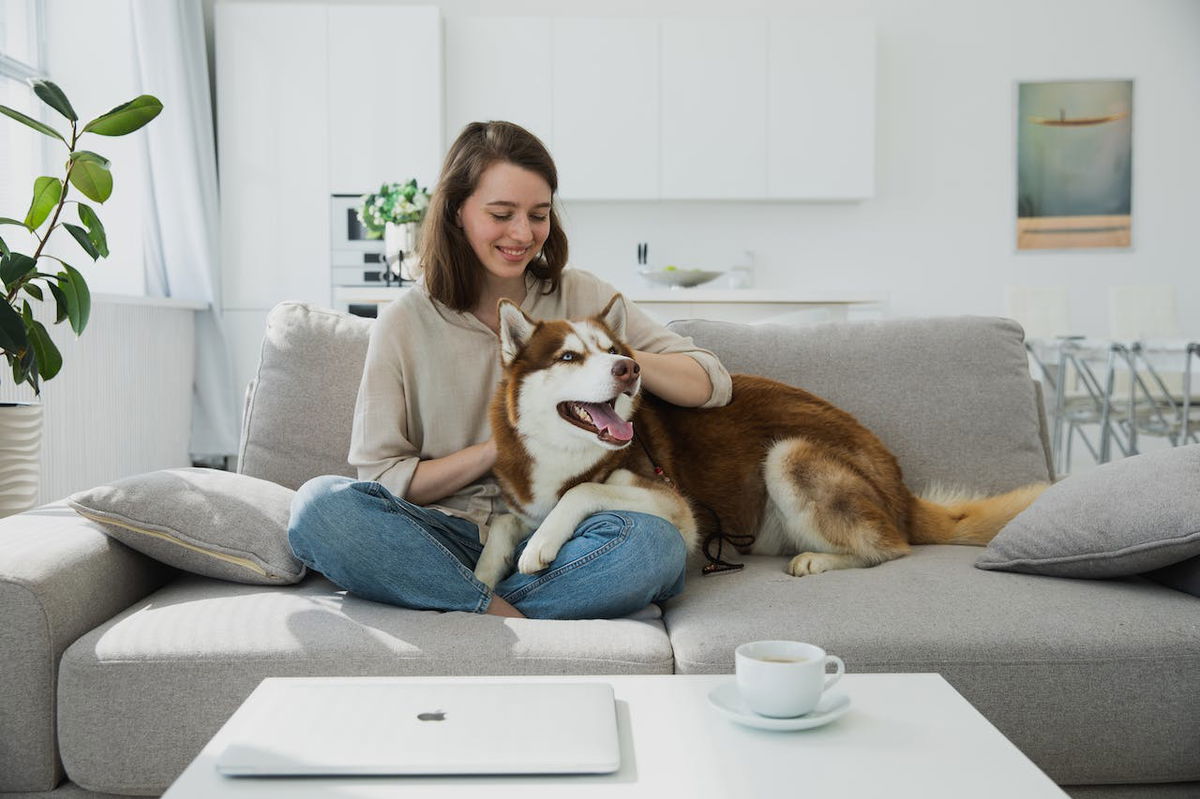
Keep in mind that these Huskies have a strong prey drive which can be overwhelming for small pets such as cats, ferrets, rabbits, and birds.
Novice dog owners can appreciate Siberian Husky’s personality although some of them are often not prepared for the dog’s exercise needs.
Many people have purchased or adopted Siberians solely for their elegant looks without considering the dog’s temperament and free-thinking nature.
This has unfortunately led to many Huskies being abandoned or surrendered to animal shelters. Prospective Siberian Owners should study the personality of these canines beforehand.
Siberian Husky Intelligence
Siberian Huskies are intelligent dog breeds, but they can be stubborn because of their independent-thinking nature and impulsivity.
Renowned canine Psychologist Dr. Stanley Coren found Siberian Huskies to be position 74 out of 138 dog breeds tested for Canine IQ.
Based on their average ranking, it helps to start training your Siberian Husky for obedience right from a young age to become more responsible adults.
Initially bred to pull sleds, Siberians are good problem-solvers and they can surprise their human handlers with how they approach situations with an open mind.
Siberian Husky Health and Lifespan
Average Lifespan
The average life expectancy for a Siberian Husky is about 12 to 15 years, but they can live past this range when provided with proper care.
Common health issues and genetic disorders
Siberian Huskies are generally healthy, although they can be susceptible to various conditions and identified by practicing vets.
Hip dysplasia and inheritable eye problems are the two most common conditions that can affect Siberian Huskies due to poor breeding or upbringing.
The other health problems linked with Siberian Huskies are:
- Orthopedic conditions
- Cataracts
- Epilepsy
- Certain types of cancers
- Hypertension
- Heart disease
- Laryngeal paralysis
- Inflammatory bowel disease
- Hypothyroidism
Preventative measures for good health
To prevent heredity conditions, it is highly advisable to get your Siberian Husky from reputable breeders who prioritize the health condition of the upcoming puppies.
Ask your preferred breeder to provide a health clearance record for your desired puppy. This should include records about orthopedic conditions and eye examination reports.
Taking your Husky for regular physical checkups and medical exams at the vet is another preventive measure for good health.
This can allow for the early detection of chronic conditions, whose treatment improves the recovery rate of your dog.
Giving consistent nourishment of a high-quality dog diet is good for your Husky’s body and mind. Good canine food is needed for optimal growth and keeping the dog fit against diseases.
In addition to good food, taking your Husky for a regular workout is essential in keeping them fit and in good shape.
This aids in keeping your dog in healthy weight and prevents them from adding extra weight which can attract other related chronic conditions.
Siberian Husky and Allergies
Siberian Huskies shed fur all year round, but they blow out their undercoat twice a year during seasonal changes.
This can cause allergy-prone individuals to have negative reactions due to fallen fur and other pet allergens including urine and saliva.
However, it’s crucial to note that individual reactions vary, and those with severe allergies should spend time grooming their pups and using HEPA filters to clean the atmosphere.
Siberian Husky Grooming Needs
The elegant dual-layered coat in Siberian Huskies requires adequate grooming to keep them looking great and clean.
Regular brushing twice or thrice a week is good enough to straighten your dog’s fur and prevent matting or tangling.
Daily brushing can be of great help during the high-shedding months to reduce the amount of fur stuck on furniture, clothes, and in the atmosphere.
The Furminator de-shedding tool is an excellent brush to use when your dog’s undercoat is blowing out.
Monthly baths can help Siberian Huskies look clean and reduce doggy odor which can build up over time.
Bathing your dog at home can be a fun experience, but make sure to use canine grooming products such as hypoallergenic shampoo.
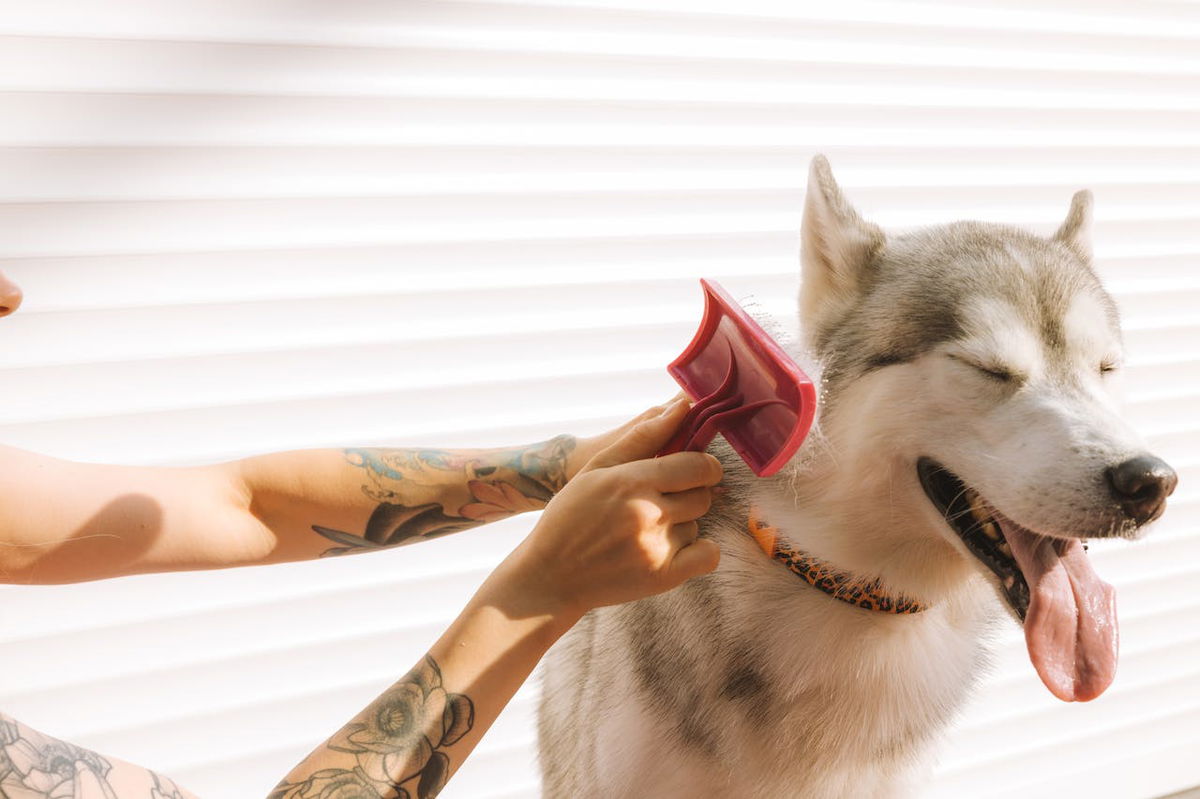
Siberian Huskies typically do not require extensive haircuts. Check their paw pads and trim any overgrown hair to prevent discomfort or slipping.
You should pay attention to the fur around their triangular ears and eyes, keeping it neat and free from debris.
Speaking of ears, plan to clean the internal canal at least once a week using a soft cloth material dipped in a vet-approved ear cleanser. Be gentle while working on the ears to avoid bruising the delicate canal.
Trim your Husky nails regularly to keep them short and free from splitting. Overgrown nails can also cause discomfort while your dog is walking.
Brush your dog’s teeth with canine toothpaste and a soft toothbrush to keep oral hygiene in good condition and prevent halitosis.
Siberian Husky Exercise and Activity Levels
Activity level
Siberian Huskies will appreciate intensive physical activity for about two hours a day provided the weather is not too hot outside.
If the weather doesn’t allow it, you may have to find fun activities and creative ways of entertaining your Husky inside your house.
If you live in a large house with a backyard, you can expect to find several holes in the area since Siberian Huskies love to dig, owing to their historical traits of digging into icy snow.
A bored Siberian Husky can be destructive due to their high energy drive and independent-thinking nature. Make sure to find something constructive that can expend their energy positively.
Suitable activities and games for Siberian Huskies
The following are some of the suitable physical exercises and mental games that can keep Siberian Huskies satisfied:
- Walking and jogging
- Running
- Hiking
- Playing fetch
- Puzzle games
- Agility training
- Obstacle courses
- Swimming
- Tug of war
- Biking
- Dog group playdates
Siberian Husky Training and Socialization
Siberian Huskies can be strong-willed, a character that can make it hard to train them compared to other dog breeds.
These workaholic dogs are prone to use their intelligence in creating clever games and conditions that suit their needs.
We strongly recommend that you start training your Siberian Husky right from their puppyhood stage and make sure to adopt positive reinforcement methods to improve your chances of success.
These Huskies are incredibly strong and smart, and they can be vocal too. Without proper training, your Siberian Husky can express their dissatisfaction in excessive howling and whining.
Many Siberian Huskies are eager to explore their surroundings, owing to their instinctive trail to pull sleds. This makes them notorious escape artists, so you should never walk them off-leash.
Huskies can benefit from socialization through exposure to different people and animals in dog-friendly environments.
Siberian Husky Living Conditions
Siberian Huskies can thrive in a household with a large space and ample backyard that offers them immense opportunities to play.
You may have to secure your backyard with a sturdy long fence to prevent your Husky from digging and jumping in the spirit of exploring.
People living in apartment blocks can also own Siberian Huskies, but they need to be ready to match up the exercise needs of these dogs.
One way apartment dwellers can keep their Huskies active is by taking them out for regular walks and occasional hikes or visits to the dog park.
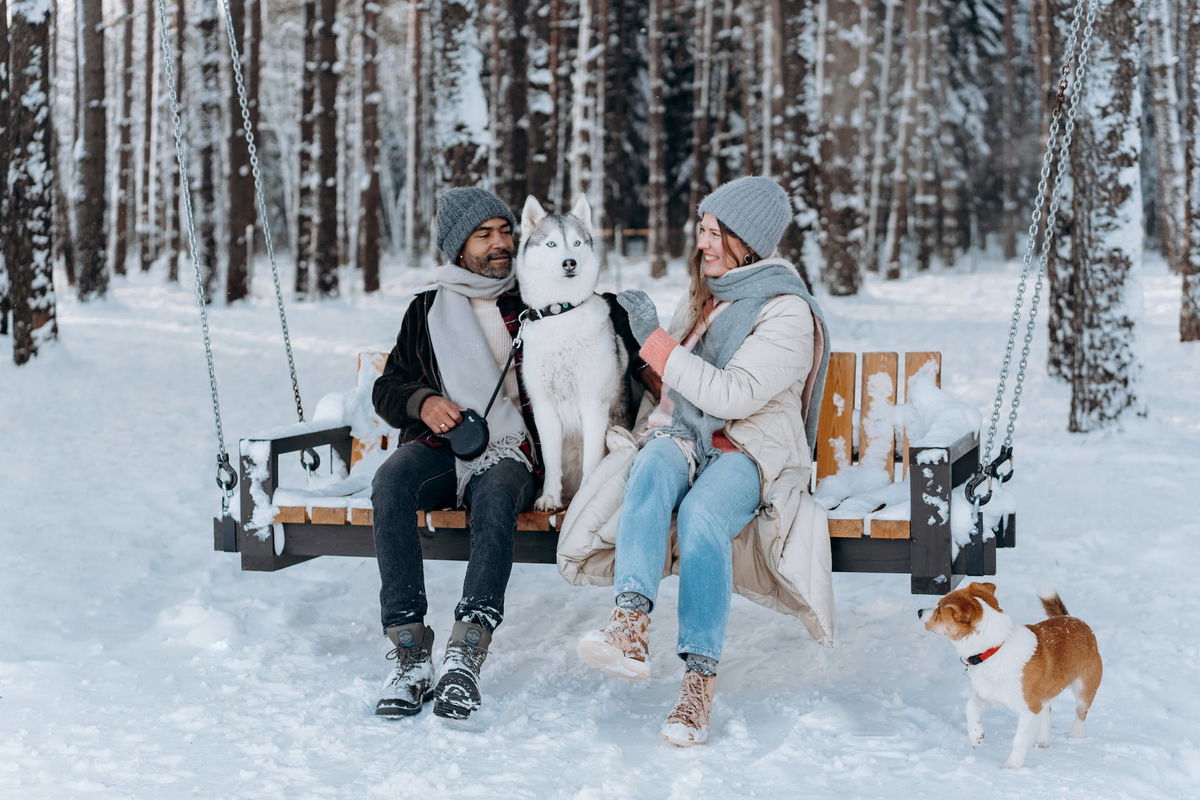
Siberian Huskies were bred for colder climates, but they can also adapt to warmer landscapes as long as they don’t get heated up.
If you live in a warmer climate, we suggest you set a shade for your Husky, provide a constant supply of fresh water, and minimize vigorous activities during peak heat hours.
Siberian Husky Diet and Nutrition
Siberian Huskies have a unique metabolism that makes them reliant on less food than most similar-sized breeds require.
Your Husky can thrive with a two-meal session per day, each consisting of roughly one cup of dry quality dog food.
However, each dog is an individual and your Husky’s specific needs for nourishment will ultimately depend on several factors including age, activity level, and health condition.
Be on the lookout for your dog’s weight to prevent them from adding extra pounds or becoming obese. You can talk about your dog’s nutritional needs with a qualified vet nutritionist for the best outcome.
Siberian Husky Pregnancy and Litter Size
The average gestation period of a pregnant Siberian Husky is about 63 days, and you can expect a bundle of 4 – 6 puppies in one litter.
Providing your Husky mother-to-be with the necessary prenatal care and tailor-made diet is crucial during the pregnancy journey.
Conclusion
Siberian Huskies are beautiful to look at. But aside from the aesthetics, these dogs need a ‘pack leader’ and an active lifestyle.
Huskies come from a lineage of working dogs, and so they have high energies that need to be directed into positive outlets.
Make sure to dedicate enough time to exercising your dog and socializing them with other pets to attune their independent thinking nature.
Siberian Huskies love to explore and wander off their owner’s premises. To keep them protected, make sure to fence your yard and use a strong leash whenever you go out for a walk.
Laura is the founder of Furs'n'Paws. She is a also a pet writer and expert with more than 20 years of experience of working with dogs and cats. She developed a very strong love for animals at a young age. Her passion led her to establish a thriving pet sitting and dog walking business in Dubai. As an expert in pet training, behavior, and nutrition, Laura is committed to helping pet owners and pet lovers by offering high-quality information on a wide range of topics.


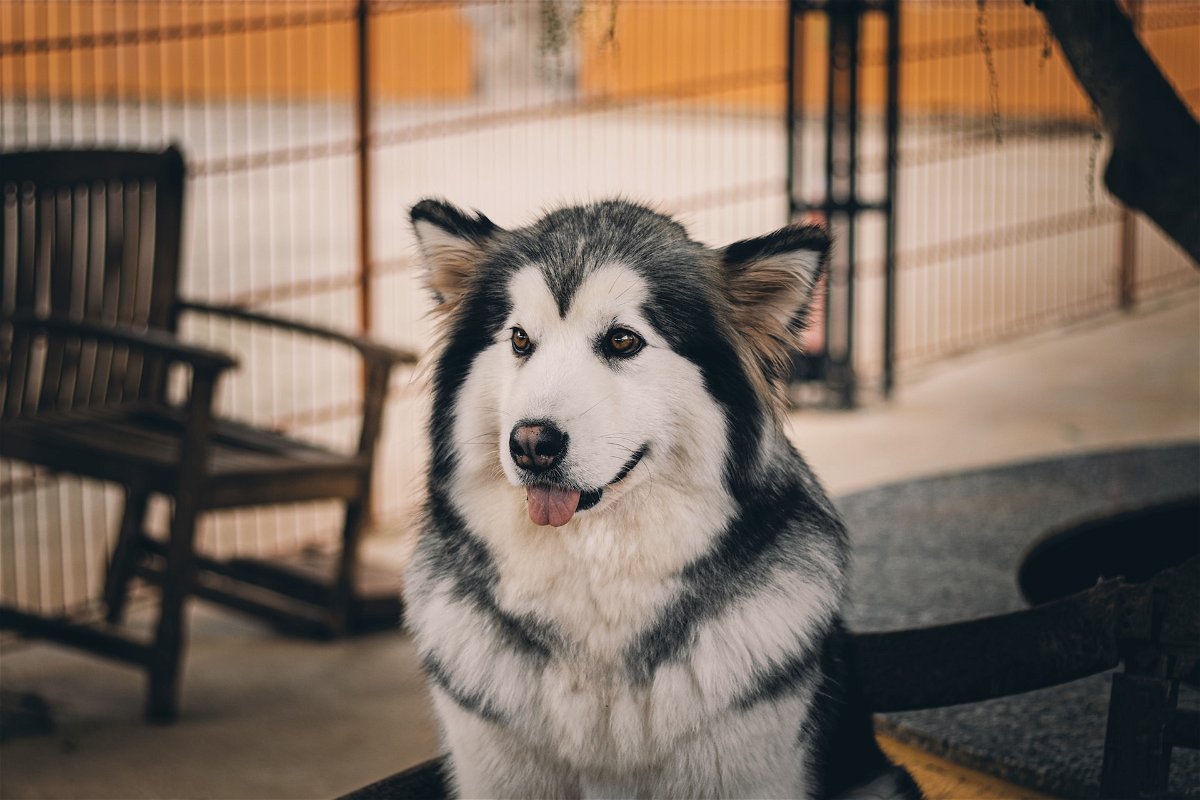
No responses yet